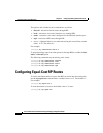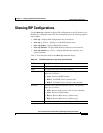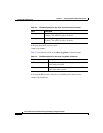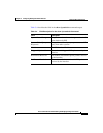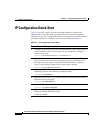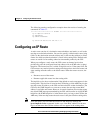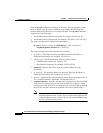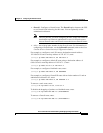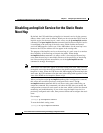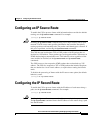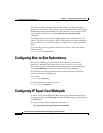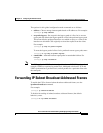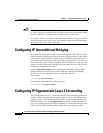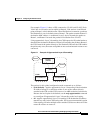
Chapter 6 Configuring the Internet Protocol
Configuring an IP Route
6-4
Cisco Content Services Switch Routing and Bridging Configuration Guide
OL-4580-01
Use the ip route command to configure an IP route. You can configure a static
route, a default static IP route, a blackhole route (where the CSS drops any
packets addressed to the route), or a firewall IP route. Each ip route command
requires one of the following:
• An IP address and a subnet mask prefix; for example, 192.168.1.0 /24
• An IP address and a subnet mask; for example, 192.168.1.0 255.255.255.0
The syntax for this global configuration command is:
ip route ip_address subnet_mask[blackhole|ip_address2{distance|
originated-packets}|firewall index {distance}]
The syntax and options for the command are as follows:
• ip_address - The destination network address. Enter the IP address in
dotted-decimal notation (for example, 192.168.11.1).
• subnet_mask - The IP subnet mask. Enter the mask in either:
–
CIDR bitcount notation (for example, /24).
–
Dotted-decimal notation (for example, 255.255.255.0).
• blackhole - Instructs the CSS to drop any packets addressed to the
destination.
• ip_address2 - The next hop address for the route. Enter the IP address in
dotted-decimal notation (for example, 192.168.11.1).
• distance - (Optional) The administrative distance. Enter an integer from 1 to
254. A smaller number is preferable. The default value is 1.
• originated-packets - Specifies that the route is used only by packets created
using flows or sessions going to and from the CSS (for example, a Telnet
session to the CSS). The route is not used by flows or sessions that go through
the CSS (for example, between an attached server and a remote client).
Note A ping response and an SNMP responses do not use the
originated-packets route. A ping request sent from the CSS uses the
originated-packets route. A ping response sent from the CSS does not
use the originated-packets route.



